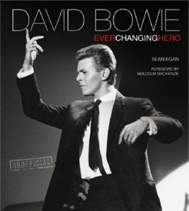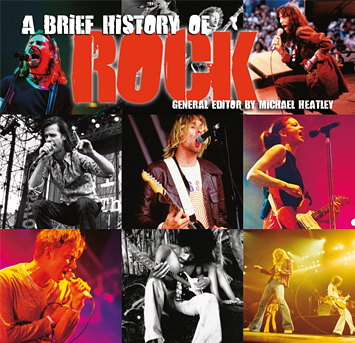A blues guitarist best known for his slide-guitar work, Sonny Landreth (b. 1951) was born in Canton, Mississippi. The family relocated to Lafayette, Louisiana, where Sonny was immersed in the area’s swamp-pop and Zydeco music. Beginning as a trumpeter, he was already a virtuoso guitarist in his teens. His earliest role model was Scotty Moore, ...
(Harmonica, vocals, 1914–48) John Lee Williamson was born in Jackson, Tennessee. He taught himself harmonica at an early age and left home in his mid-teens to hobo with Yank Rachell and Sleepy John Estes through Tennessee and Arkansas. He settled in Chicago in 1934 and made his recording debut for Bluebird in 1937. His first song, ‘Good ...
(Harmonica, vocals, 1911–86) Saunders Terrell was born in Greensboro, Georgia and taught himself to play the harmonica at the age of eight. He lost the sight in one eye, aged 10, and the second eye at 16. Terry played mostly in North Carolina from the late 1920s. He teamed up with Blind Boy Fuller in 1934 ...
(Tenor and soprano saxophone, b. 1930) Sonny Rollins stands alongside John Coltrane as the major bop-rooted stylist on tenor saxophone. He cut his teeth in New York with bop giants including Charlie Parker, Bud Powell, Thelonious Monk and Miles Davis. He was a member of the Clifford Brown–Max Roach Quintet (1955–57), and has led his own bands since ...
(Alto, tenor and baritone saxophones, 1924–82) Edward ‘Sonny’ Stitt was equally proficient on the alto and tenor saxophones. Initially a devotee of Charlie Parker, he developed into a hard-hitting and fluid improviser with a reputation for extreme toughness in ‘cutting’ contests. He worked with Dizzy Gillespie, Bud Powell, J.J. Johnson and Oscar Peterson, but ...
(Harmonica, vocals, c. 1912–65) Alex Ford ‘Rice’ Miller was born in Glendora, Mississippi. He taught himself the harmonica at the age of five and by his early teens had left home to sing and play as ‘Little Boy Blue’. He worked streets, clubs and functions through Mississippi and Arkansas during the 1930s, often playing with Robert ...
(Vocals, guitar, b. 1931) Born in Newport, Arkansas, Albert ‘Sonny’ Burgess cut some of Sun’s wildest and most primitive-sounding rockabilly. His growling vocals and heavily R&B-influenced style was too extreme for mass sales, but with his group, The Pacers, he had one of the top rockabilly stage acts in the South during the 1950s. ...
(Vocals, b. 1929) From the late 1950s through to the early 1980s, Hackleburg, Kentucky-born James Hugh Loden had a long string of chart-topping hits with romantic ballads, starting with ‘Young Love’, which reached the top of the country and pop charts in 1957. Other big hits for James were ‘Need You’ (1967), ‘Heaven Says Hello’ (1968) and ...
(Harmonica, vocals, 1912–65) The career of Mississippi’s Sonny Boy Williamson began as a case of identity theft. A 1930s delta bluesman named ‘Rice’ Miller had landed a starring spot on the blues radio show King Biscuit Time. The sponsor had Miller pose as Chicago harmonica star John Lee ‘Sonny Boy’ Williamson. The deception worked in rural America, and ...
(Vocal duo, 1964–76) Jobbing Hollywood songwriter and arranger Sonny Bono linked up, both professionally and romantically, with Cher La Pier, a session singer, for a handful of misses before striking gold with 1965’s chart-topping ‘I Got You Babe’. Its vague if fashionable ‘protest’ tenor, the overnight sensation’s proto-hippy appearance and an element of boy-girl ickiness ...
One of the most admired guitarists in music today, fingerstyle master Phil Keaggy (b. 1951) has recorded over 50 solo albums, plus eight with his band Glass Harp, in a career spanning more than 35 years. With material ranging from hard-edged progressive rock to tender ballads, Keaggy is one of only a few guitarists who have been ...
As the end of the twentieth century approached, the United States – its culture included – entered a rare period of recapitulation, retrieval and, ultimately, renewal. The election as President of ageing Ronald Reagan, ex-movie star and California governor, introduced unexpected neo-conservatism, an ideology that looked back to a rosy, though mythical, ...
The legend of Sun Records seems to expand and shine brighter with every passing year, as successive generations discover the almost unbelievable array of musical gems that were created at that modest little studio at 706 Union Avenue, Memphis. Sun was the brainchild of one man and it is no exaggeration to say that without his contribution, not ...
When Vassar Clements formed a band called Hillbilly Jazz in 1975, Bill Monroe’s former fiddler pulled the cover off the hidden connection between country music and jazz. The two genres had more in common than most people thought. After all, Jimmie Rodgers recorded with Louis Armstrong early in their careers; jazz legend Charlie Christian debuted on Bob Wills’ radio ...
The saxophone occupies an unusual position in that it is a bespoke instrument that has barely changed since its creation. Although it does not occupy the position in the orchestra its creator had envisaged, Adolphe Sax’s invention has played a central part in music ever since it burst on to the scene in the 1840s. Sax’s father, Charles, ...
AUTHORITATIVE
An extensive music information resource, bringing together the talents and expertise of a wide range of editors and musicologists, including Stanley Sadie, Charles Wilson, Paul Du Noyer, Tony Byworth, Bob Allen, Howard Mandel, Cliff Douse, William Schafer, John Wilson...
CURATED
Classical, Rock, Blues, Jazz, Country and more. Flame Tree has been making encyclopaedias and guides about music for over 20 years. Now Flame Tree Pro brings together a huge canon of carefully curated information on genres, styles, artists and instruments. It's a perfect tool for study, and entertaining too, a great companion to our music books.

David Bowie
Fantastic new, unofficial biography covers
his life, music, art and movies, with a
sweep of incredible photographs.


